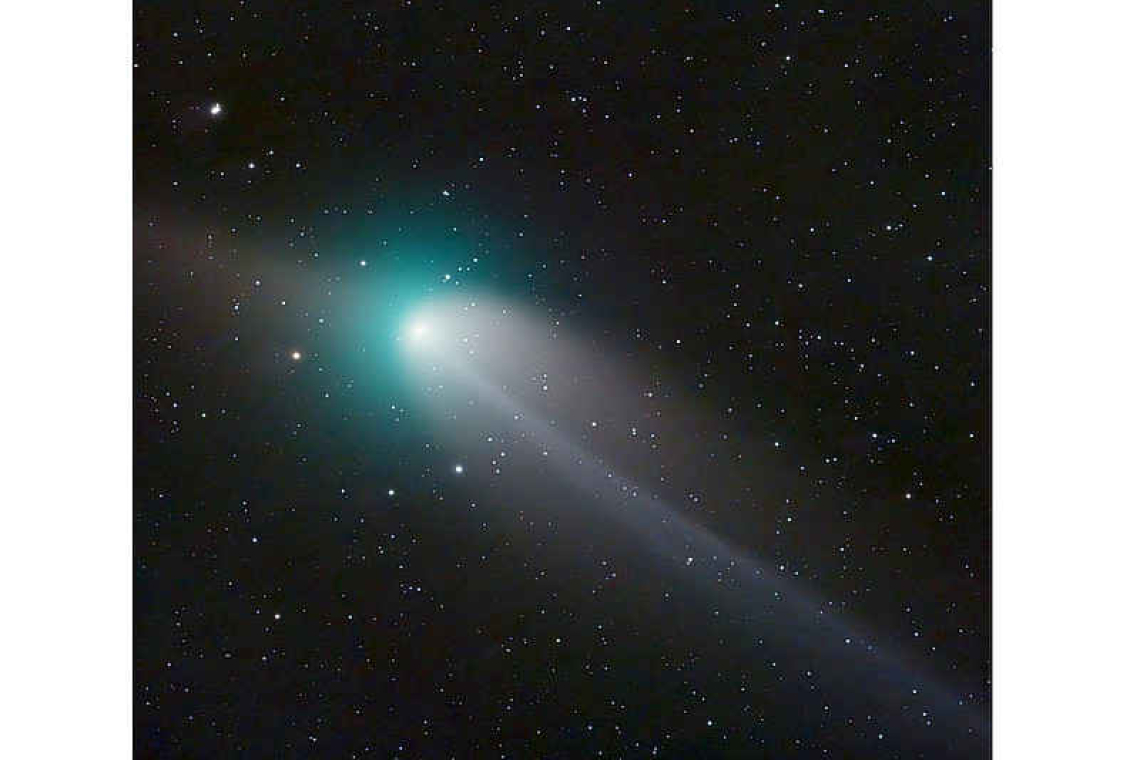~ St. Maarten’s Backyard Astronomy for February 3 - 5 ~
Sun rises at 6:44am
Sun sets at 6:08pm
Lunar phase: Approaching full moon (on Sunday)
Moon sets at 6:05am
Moon rises at 5:20pm
All eyes have been looking up this week as we have been searching and squinting for the Green Comet. Officially designated Comet 2022 E3 ZTF, it made its closest approach to Earth on February 1. I hope you got out the binoculars or a telescope and checked it out, but if the sky was clear and bright with no ambient light around you, it was actually visible without the aid of magnification. By this weekend, you can still see it if you know where to look, but you’ll need a scope of some kind to help you see it.
This Saturday night, comet watching means looking north. It should be due north at about 8:00pm and about 60 degrees of elevation above the horizon. If you need a star hopping hint, just seek out the Winter Circle, which you should know by now if you read this column at all. The Circle has six constellations, each with at least one first order magnitude star. Orion is the easiest of the six constellations to spot – just look for his belt, three bright stars in a short, straight row.
Around the circle, look for Gemini with its two twin stars Castor and Pollux. You are getting close. The next constellation in the Winter Circle is Auriga with its bright star Capella. Saturday night, the Comet is just below Capella. Sunday night, it is even closer to the Goat Star! But from here, it will be getting fainter and fainter. The last time this particular comet was this visible from Earth was 50,000 years ago, during the time of the Neanderthals!
Want to watch the comet live on line? Go to virtualtelescope.eu and see what the big wigs at the giant telescope see! The Virtual Telescope Project is based in Spain and is a great resource for any lover of the stars and planets. The fantastic image provided here is courtesy of Jasna Maras of Vrlika, Croatia who captured this picture of the comet on January 25.
Why is it green? Believe it or not, it’s cyanide! Yes, the green color is from the out-gassing of several carbon compounds, with cyanide being the most likely compound generating the green colour. I wouldn’t worry about being sickened by the cyanide, as the comet is, at its closest, more than 10 times as far away as the moon.
Northern Hemisphere observers with a good telescope will have a view of the comet until the end of April, when the comet will disappear into the evening twilight. Maybe humanity will witness its return in 50 millennia or so.
Meanwhile, the full Snow Moon is rising Sunday night. Enjoy it with someone you love, or at least like a little bit!
Thank you for keeping up with the Night Sky articles, backyard astronomy designed for St. Maarten sky viewing. FYI: If you are out later on in the week, note that each star rises about four minutes earlier each day than written here, and the moon rises 50 minutes later. Night Sky is researched and compiled by Lisa Davis-Burnett. Earthsky.org is a key resource for information and images. Questions or comments? Email This email address is being protected from spambots. You need JavaScript enabled to view it.







